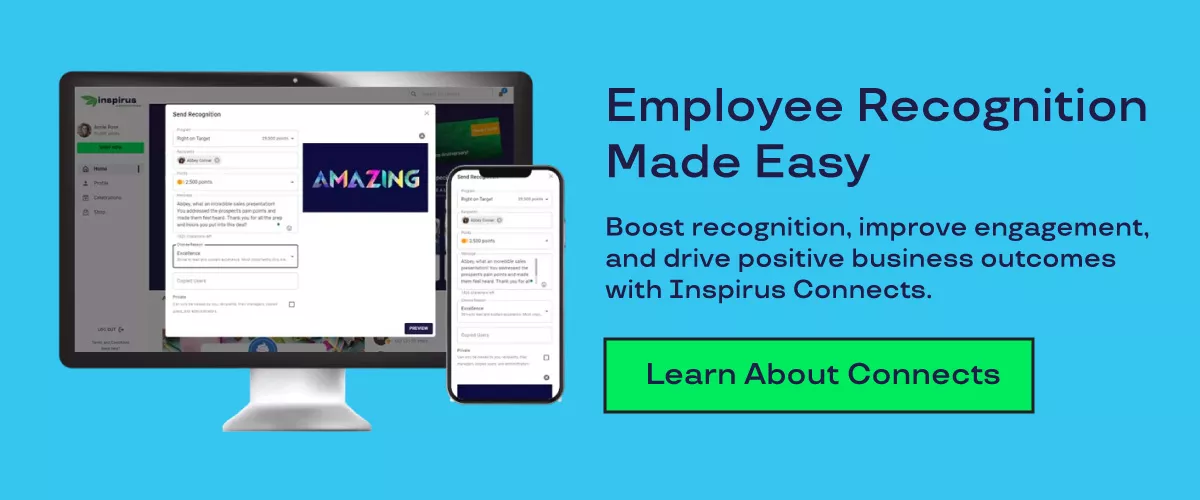
Maximizing Employee Engagement Through Annual Incentive Plans
April 30, 2024
Annual incentive plans are a great method for fostering higher employee engagement and improving employee performance.
Businesses of all types and sizes rely on employees to help them produce and deliver their goods and services. The more engaged and productive those employees are, the more successful and profitable these companies will be. In fact, the quest to ensure positive employee engagement is ongoing. Yet, often despite their best efforts, many organizations continue to struggle with achieving—and maintaining—a highly engaged workforce.
Gartner has measured and monitored the issues, reporting that less than one-third of employees say they are “engaged, enthusiastic and energized by their work.”
Engagement has a real impact on business performance. Gartner reports: “those who report being energized and excited about their work are 31% more likely to stay at their organization, 31% more likely to go above and beyond (discretionary effort), and they contribute 15% more.”
One effective method employers can use to generate the kind of engagement they need to foster loyalty, increase productivity, and drive positive business results is through annual incentive plans[AC1] . [AC1]Link to pillar page
Annual Incentive Plans to Maximize Engagement
Annual incentive plans can be a powerful and highly effective way to foster employee engagement. These plans are structured compensation strategies that link a portion of employees’ pay to specific performance metrics. The idea is that by aligning employee efforts with organizational goals, employees will be better able to see how their efforts contribute to organizational success and by rewarding them for that success they’ll be motivated to work harder and more effectively in pursuit of these goals.
Incentive plans aren’t necessarily all about more pay, though. Incentives certainly can be monetary, but they might also be non-monetary or tied to recognition rather than compensation. Even monetary incentives may vary and might include cash bonuses, profit sharing, stock options or other benefits. Non-monetary benefits, on the other hand, could include additional vacation days or time off, professional development opportunities, special events or celebrations, and more.
Recognition is another important part of incentive plans, whether they are monetary or non-monetary. What gets recognized gets repeated, the theory goes. Such recognition could include public acknowledgement, awards, certificates of achievements, or even points through a digital recognition platform. Importantly, these types of incentives don’t just have a positive impact on the employees being recognized, but also on the employees who are observing the recognition and who may be driven to work harder to achieve the same type of recognition for themselves.
Annual incentive plans are different from other forms of compensation because of their structure and the type of behavior they’re designed to motivate. For instance, unlike base salaries, annual incentive plans are performance-based, specifically rewarding employees for the accomplishment of predefined outcomes. In addition, annual incentive plans are focused on achieving short-term, immediate goals with rewards offered annually.
Benefits of Annual Incentive Plans for Employee Engagement
There are a variety of benefits that can be achieved through the use of annual incentive plans. Chief among these, of course, is driving engagement to enhance motivation and performance. To enhance motivation, companies need to understand what motivates their employees—different employees will be motivated by different things.
One interesting motivator that many employees point to these days is professional development. In fact, a Udemy Academy survey indicated that 54% of respondents said that having more time to learn at work would increase their motivation — 46% said that having learning paths personalized to their individual goals would be motivational.
Continuous feedback and recognition are also important motivators for many employees. Immediate and specific feedback helps employees understand how their actions impact organizational outcomes and provides them with a sense of progress and personal achievement. Fostering a culture of recognition and appreciation can help to ensure that these important motivators are actively present in the workplace. By taking steps to ensure that recognition and appreciation are embedded in the organization’s culture, companies can create an environment where employees feel valued and are motivated to excel.
When employees feel supported and valued, they’re more likely to stay with the organization. Recognizing and addressing employee concerns, offering incentives, and investing in positive employee experiences can lead to greater employee loyalty, minimizing the high costs of turnover.
Of course, any annual incentive plan needs to be aligned with organizational goals and desired outcomes. Goal alignment is a key differentiator between high- and low-performing companies. Aligning, individual, team, and organizational goals gets everybody working together in support of the organization’s mission, vision, and values.
Components of an Effective Annual Incentive Plan
Not all annual incentive plans are equally supportive and successful in driving engagement. There are certain components that should be included in these plans to ensure success.
Here are four key components of an effective annual incentive plan:
- Setting clear and measurable goals. It’s important for employees to clearly understand what success looks like. Clear and measurable goals give them a yardstick against which to measure their performance.
- Fair and transparent reward structures. To ensure trust and motivation among employees, reward structures should be based on objective performance metrics that are directly linked to established goals. Transparency in how rewards are determined and distributed will help to ensure that employees understand the process and criteria for recognition and compensation. This can help to minimize perceptions of bias or favoritism which could work against engagement.
- Flexibility and customization. A one-size-fits-all approach to incentives and rewards is less effective than ensuring flexibility and the opportunity for customization. As we’ve seen, employees are motivated differently. Having an array of ways to address different needs and references can allow managers to select rewards that are most meaningful to their team members.
- Alignment with company culture and values. The behaviors that are rewarded through an annual incentive plan need to be aligned with the company’s culture and values to ensure that the behaviors being rewarded are those that the company wants to support and sustain. For example, if teamwork is a core value, the reward structure should be designed to reward collaborative efforts and achievements.
The types of incentives offered through these plans can be varied and, as we’ve seen, providing that type of flexibility can offer big benefits for employees and the organization.
Types of Employee Incentives
Annual incentive plans can include various types of incentives, such as monetary bonuses, stock options, profit-sharing, recognition awards, and non-monetary rewards like extra vacation days or professional development opportunities.
Professional development opportunities, such as workshops, courses, or conferences, are also popular non-monetary incentives that benefit both employees and the organization.
By offering a mix of incentives, companies can cater to diverse employee preferences and motivations. This approach acknowledges that while some employees may be primarily motivated by financial rewards, others may place greater value on recognition, personal development, or work-life balance.
Implementing Annual Incentive Plans with HR Software
Administering an annual incentive plan can be complex and time-consuming. The larger the organization, of course, the more this will be the case. Fortunately, HR software can help to streamline the implementation process. By automating and centralizing the administration of compensation and benefits, HR software can reduce the manual workload required, alleviating HR department demands.
In addition, software helps ensure that organizations can swiftly adapt to changes in compensation strategy driven by both internal and external factors. HR software can also help to facilitate real-time tracking and analysis of performance metrics and reporting, making it easier for managers to align employee accomplishments with organizational goals.
Best Practices for Maximizing the Impact of Incentive Plans
Effective communication is the cornerstone of any successful incentive plan. It’s important to clearly articulate the objectives, criteria, and rewards associated with the plan and to keep employees and the company up to date on achievements and results.
Providing ongoing feedback and recognition can be done through a wide range of channels that might include meetings, emails, company newsletters, and internal social platforms. Tailoring messages to meet the needs of diverse employee demographics and incorporating real-life examples and storytelling can enhance understanding and engagement with the plan.
For maximum impact, incentive plans should be integrated with broader employee engagement strategies to ensure that incentives aren’t seen in isolation but are part of a comprehensive approach to motivating and retaining employees.
Tying it all Together
Annual incentive plans are a critical component of a culture that supports and rewards employee engagement. Through a combination of monetary and non-monetary incentives, along with various types of rewards and recognition, incentive plans can be a powerful way to boost engagement, productivity and loyalty.
HR leaders are in a perfect position to prioritize and invest in annual incentive plans designed to drive positive performance and minimize the high costs of disengagement and turnover. Employee engagement never goes out of style. Take steps today to implement an annual incentive plan designed to provide flexibility and positive support for employees’ efforts on behalf of your organization.





